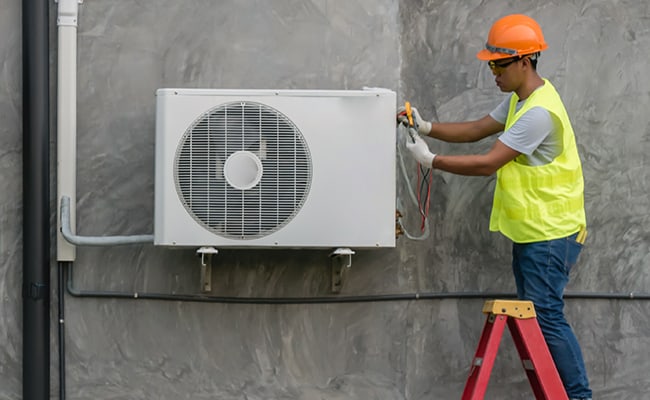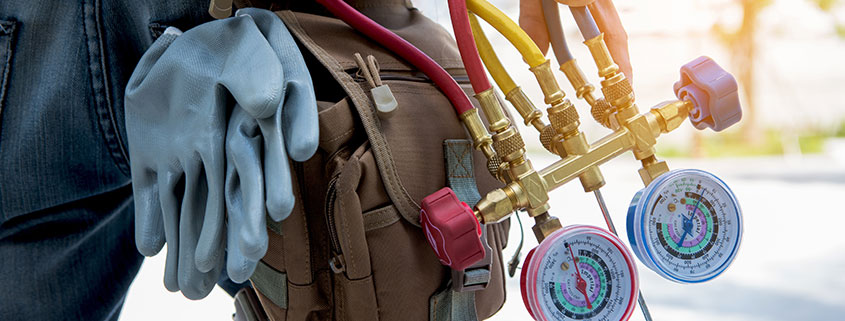The Value of Cooling And Heating Installation: Secret Factors To Consider for a Comfy Indoor Atmosphere
The setup of a Cooling and heating system is an essential part in accomplishing an energy-efficient and comfy indoor environment. Factors such as the viability of the system for particular structure requirements, appropriate sizing to prevent inadequacies, and the know-how of professionals for a top quality setup play pivotal duties. The adoption of innovative innovations can significantly improve system performance.
Selecting the Right System

When selecting a cooling and heating system, it is crucial to evaluate the capacity needed to efficiently warm or cool the space without overworking the system, which can lead to boosted wear and functional expenses. Consulting with an expert heating and cooling professional can offer beneficial understandings right into choosing a system that aligns with both the architectural layout and the awaited use patterns of the structure.
Furthermore, thinking about the integration of clever modern technology can improve system management and monitoring, supplying better control and prospective cost financial savings. By thoroughly examining these elements, one can ensure the option of an a/c system that not only fulfills prompt requirements but likewise adds to lasting operational sustainability and resident convenience.
Comprehending Energy Performance
Comprehending power performance is necessary when considering a cooling and heating setup, as it straight affects both the environmental impact and the functional expenses of the system. High-efficiency cooling and heating systems are designed to utilize much less energy to attain the same degree of convenience as less reliable models, consequently reducing utility costs and promoting sustainability. The effectiveness of a HVAC system is normally shown by ratings such as SEER (Seasonal Energy Efficiency Ratio) for air conditioning system or AFUE (Annual Fuel Usage Performance) for heaters. Greater scores symbolize better efficiency and minimized power intake.

Purchasing an energy-efficient HVAC system not just converts to set you back savings yet likewise contributes favorably to environmental conservation by decreasing greenhouse gas discharges. Additionally, lots of jurisdictions supply rewards or rebates for the installation of high-efficiency systems, even more enhancing their financial charm.
When assessing energy efficiency, think about advanced functions such as variable speed electric motors, clever thermostats, and zoning capacities. These technologies improve the system's ability to get used to varying need, consequently maximizing energy usage. It is important to talk to heating and cooling experts that can give understandings into the most effective alternatives tailored to particular environment problems and use patterns, guaranteeing optimal performance and comfort.
Importance of Correct Sizing

Conversely, a small heating and cooling system will certainly struggle to reach the desired temperature, particularly throughout extreme climate problems. This can lead to constant procedure, resulting in higher energy prices and possible overheating of system components. Furthermore, poor sizing can cause inconsistent temperature level circulation, creating particular locations of a structure to be too amazing or also warm.
To attain the appropriate sizing, a thorough load computation is important. This involves assessing various factors such as the building's square footage, insulation levels, window kinds, and regional climate conditions. By precisely establishing the heating and cooling down demands of an area, cooling and heating specialists can suggest systems that guarantee you can try here reliable operation, lowered Your Domain Name energy consumption, and boosted indoor comfort.

Ensuring High Quality Setup
A seamless HVAC installation is the foundation of a system's durability and efficiency. Ensuring high quality setup entails precise focus to information, adherence to industry standards, and utilizing proficient experts. The procedure begins with choosing a licensed and skilled HVAC service provider. This professional should have extensive expertise of diverse systems and be experienced at examining the specific demands of the building.
Proper installation goes beyond plain placement of equipment. It includes accurate calibration to make certain optimum airflow, efficient energy intake, and uniform temperature level circulation. This includes exact ductwork installation, guaranteeing links are leak-free and secure, which is critical for maintaining system performance and interior air quality.
Furthermore, the implementation of advanced analysis tools during installment can spot potential issues early, protecting against costly fixings and extending the lifespan of the system. The contractor must also make sure that all elements work and that the system conforms with local building regulations and policies.
Normal Maintenance Practices
Once the structure for a high-performing a/c system is developed via top quality setup, the emphasis should change to normal maintenance practices to make sure ongoing performance and reliability. Routine upkeep not only expands the life-span of the system but likewise boosts interior air quality, minimizes power usage, and protects against expensive repairs. Essential maintenance tasks consist of consistently altering air filters, cleansing evaporator and condenser coils, and examining the system for blockages or leaks.
Air filters should be changed or cleaned each to three months, depending upon use and environmental elements. This basic task can significantly enhance air circulation and system efficiency (lawn irrigation installation Brownwood TX). Cleaning up the evaporator and condenser coils prevents dust accumulation, which can impede heat absorption and cooling ability. Additionally, expert technicians must inspect the system every year, examining for refrigerant levels, electrical links, and total system efficiency.
Attention to ductwork is also crucial; sealing and cleaning up air ducts routinely stops air loss and contamination. Implementing a maintenance timetable makes certain that small concerns are attended to before they intensify, securing the system's functional integrity. By adhering to these upkeep practices, home owners can maximize their a/c system's functionality and preserve a comfy indoor atmosphere year-round.
Verdict
By selecting a proper system tailored to details building demands, recognizing energy effectiveness, and making certain appropriate sizing, inefficiencies can be minimized. The involvement of experienced service providers guarantees top quality installment, while the assimilation of innovative technologies boosts system performance and monitoring.
A number of types of HVAC systems are new heating and cooling system offered, including split systems, hybrid systems, duct-free systems, and packaged home heating and air systems, each with distinctive benefits and constraints.
Recognizing power performance is important when thinking about an A/c installment, as it directly impacts both the ecological impact and the functional prices of the system. The performance of a Cooling and heating system is usually shown by rankings such as SEER (Seasonal Power Performance Ratio) for air conditioners or AFUE (Annual Fuel Use Effectiveness) for furnaces (Plumber in Brownwood TX).When the foundation for a high-performing HVAC system is established through high quality installation, the focus ought to change to normal maintenance methods to make certain continued effectiveness and dependability. Additionally, specialist service technicians ought to examine the system each year, inspecting for refrigerant degrees, electrical links, and overall system efficiency